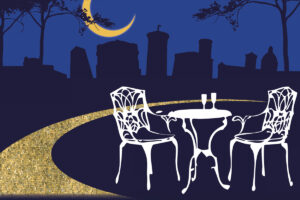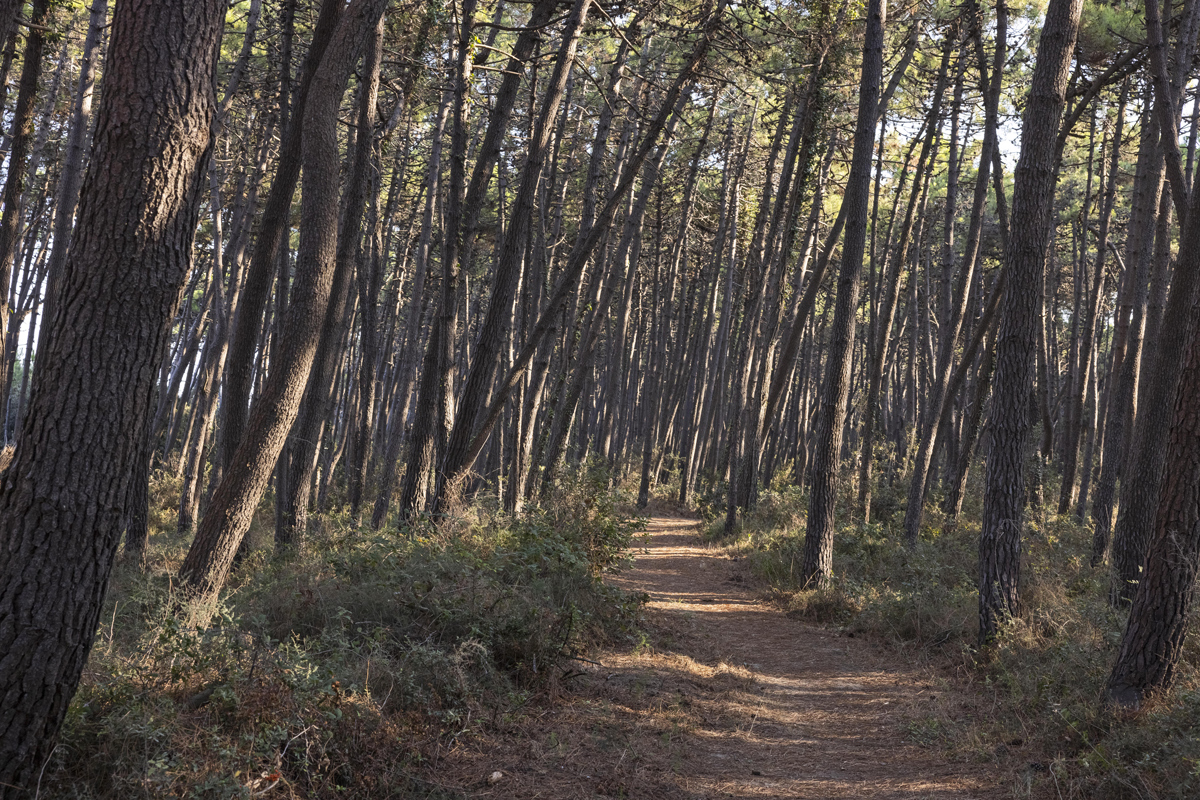The HISTORICAL PINE FORESTS of San Vitale and Classe have very ancient origins. It is believed that these forests were already present around the 5th century AD.
The current 2,000 ha of extension (1100 of them located north of Ravenna, about 900 south of Ravenna) are what remains of the 18th-century large forest that stretched for 7,000 ha and that around 1000 AD was managed by four monastic communities – the abbeys of San Vitale, Santa Maria in Porto, Sant’Apollinare in Classe and San Giovanni Evangelista.
Today, all these areas are managed by the Municipality of Ravenna in collaboration with the authority for the management of parks and biodiversity of the Po Delta, as they are part of the large Po Delta Regional Park.
But the pine forests of Ravenna are not all comparable to each other. There are also coastal pine forests (Casalborsetti, Staggioni, Piomboni, Raspona, Ramazzotti, Savio and, in the Municipality of Cervia, Pinarella) that belong to the state property and are protected as a state natural reserve.
The most ancient nucleus of these ones, the Staggioni pine forest in Porto Corsini, dates back to 1882. The following works of reforestation were carried out thanks to the Rava law of 1905, which also made them inalienable.
The area is managed by the Local office for biodiversity of Punta Marina.

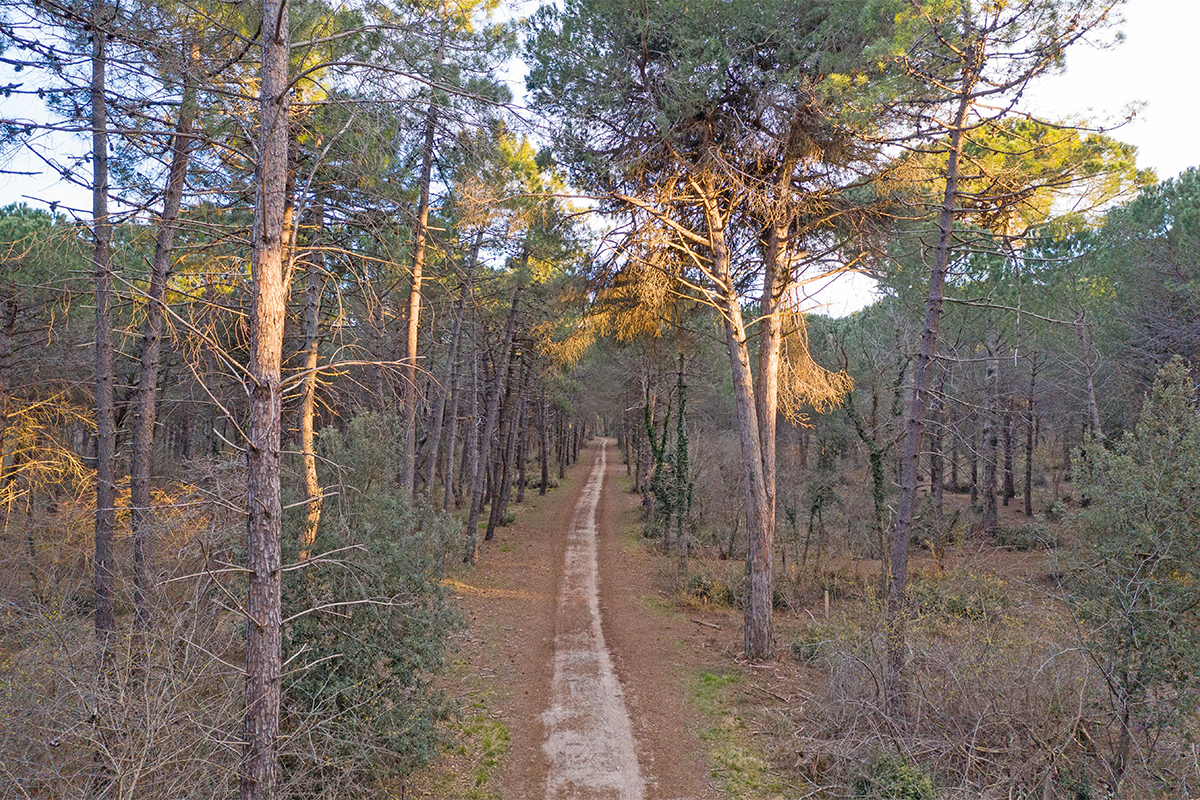
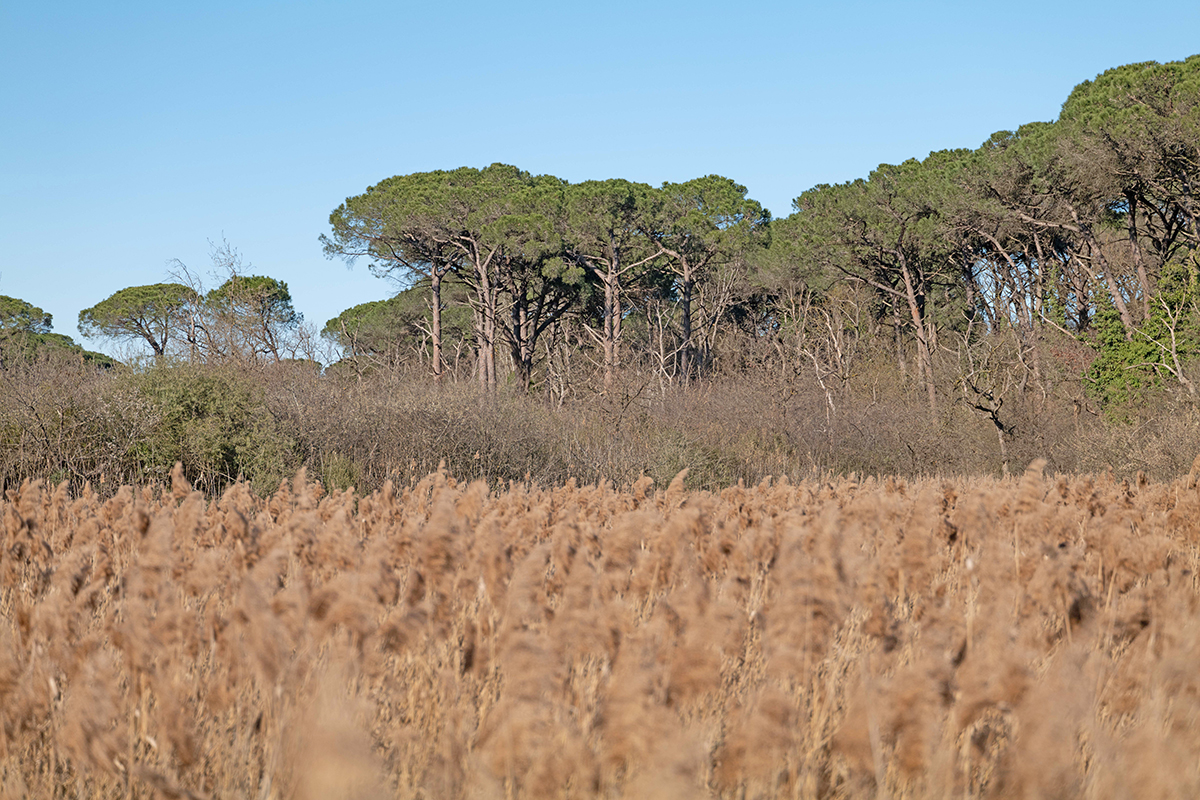
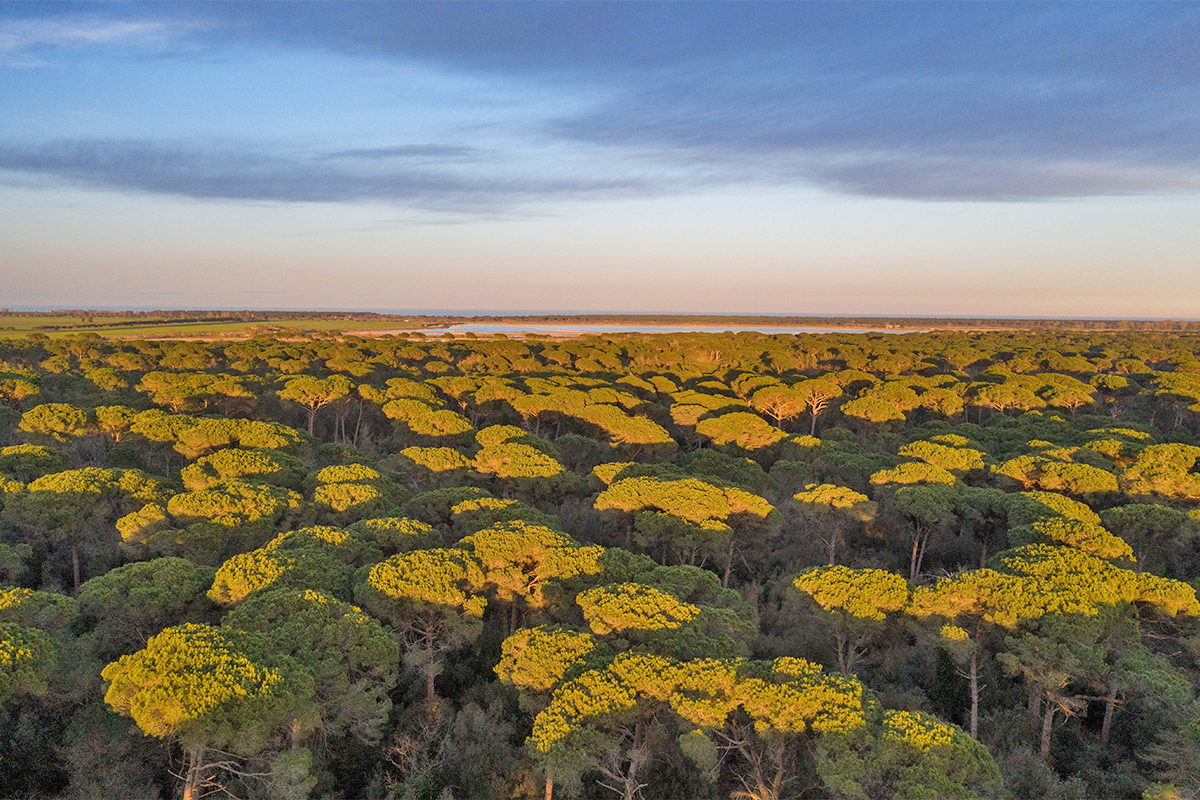
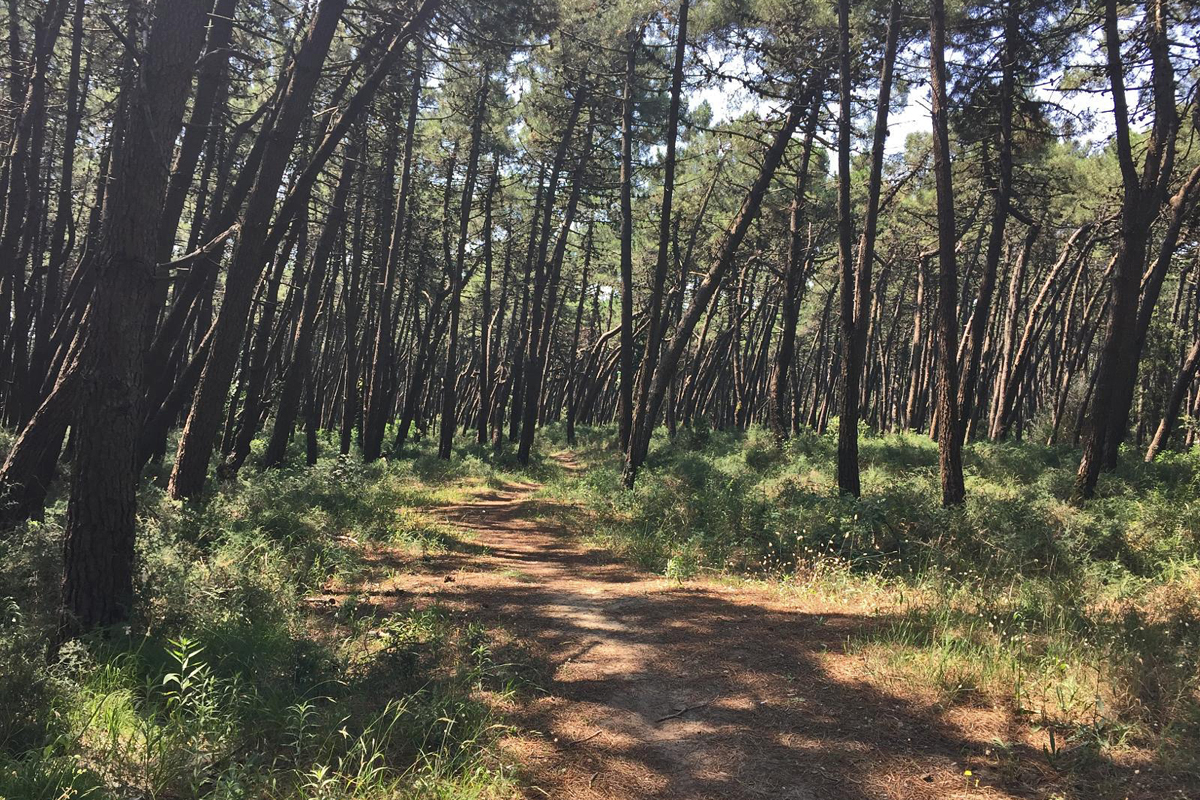





The Pine forest of San Vitale and the Pine forest of Classe
The Pine forest of San Vitale and the Pine forest of Classe are not the only ones that belong to the Municipality of Ravenna but are surely the most famous ones.
The PINE FOREST OF SAN VITALE stretches north of the city, starting from Canale in destra di Reno up to the Candiano Canal. The SS 309 state road separates it from the wonderful Oasis of Punte Alberete and Valle Madriole, which are separated by the Lamone river flowing to the Adriatic Sea.
All this makes the area really charming and an ideal place for the development of biodiversity.
The PINE FOREST OF CLASSE stretches south of Ravenna, from the little town of Fosso Ghiaia to beyond the area of Mirabilandia.
Between the pine forest and the sea are 40 ha of extraordinary landscape, an ideal place for birds and biodiversity: the wetlands of Ortazzo and Ortazzino and the mouth of the Bevano river.
This territory is particularly appreciated for its wild and unspoilt aspect and is protected for the rich biodiversity that it hosts.
The pine forests over the centuries
According to historical accounts (but there is no evidence of this) the first specimens of Pinus pinea (stone pine) were planted by the Romans at the times of Augustus.
The Emperor chose this area because he wanted to build one of the largest ports of production and supply for his massive naval fleet – the Port of Classe.
In the Middle Ages, the monks of the Camaldolese order extended the woodlands and took care of it, involving also the citizens of Ravenna in order to earn money from the harvest and sale of pine nuts.
The events occurred in the 19th century, from the beginning of the French Revolution (which caused the pine forest to be handed to private individuals) to the beginning of the Industrial Revolution, marked the most difficult period of these wooded areas.
The area of the pine forests was drastically reduced: the first one to disappear was the Pine forest of Santa Maria in Porto, destroyed by private individuals.
On May 29th 1873, the pine forests became municipal property, but this didn’t prevent them to be destroyed. In 1896, the Pine forest of San Giovanni Evangelista, between the Bevano and the Savio rivers, was torn down.
Later, partly due to the particularly harsh winters of the time, some landlords decided to turn pine forests into a source of firewood and thus destroyed other parts of them.
World War I was another heavy blow, especially for the pine forest of San Vitale. In this period, the firewood of these areas became a much sought-after raw material for the construction of roads and railways. The damage of the forests went on also in the following decades.
The need of lands for agriculture – even if some social groups refused it in order to to save the pine forests – and the industrial expansion during the second half of the 20th century, along with the difficulty of managing the area due to maintenance costs and climatic and military events caused a further reduction of the forest. The most serious destruction was carried out in 1955 to make place for petrochemical and agro-industrial plants.
Today, pine cones, pines and pine nuts are among the defining features of the territory of Ravenna. Stone pines, which once served economic purposes, are also part of the municipal coat of arms and the image of the pine forests of Ravenna has been part of literature and art for centuries.


